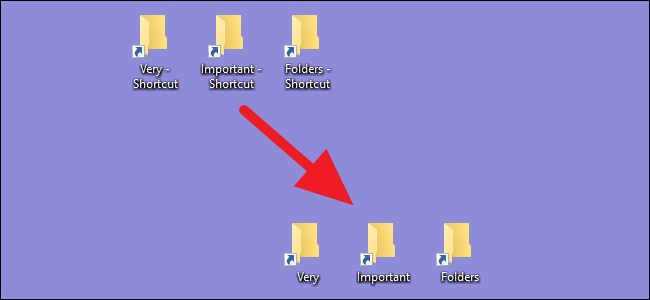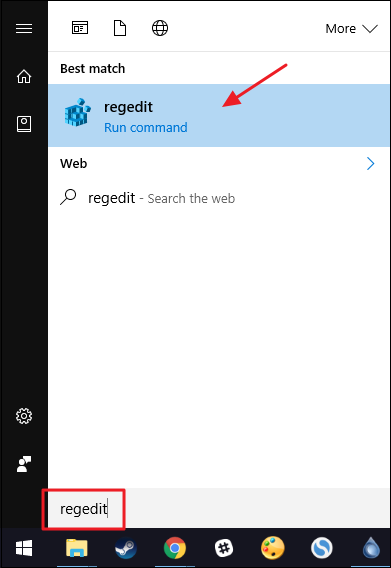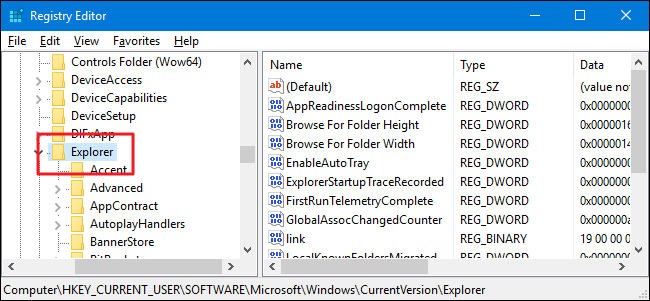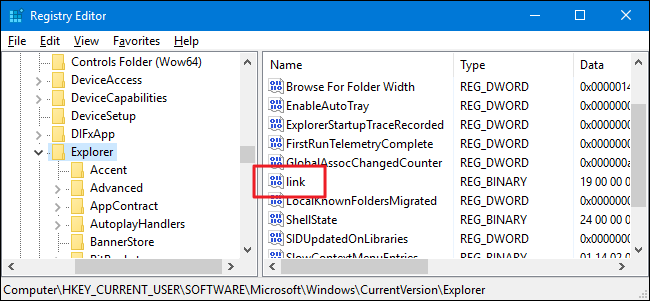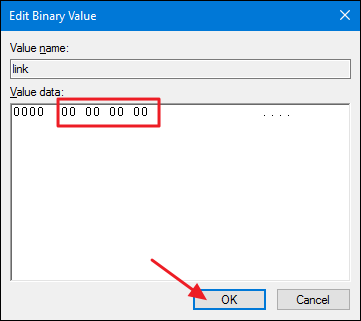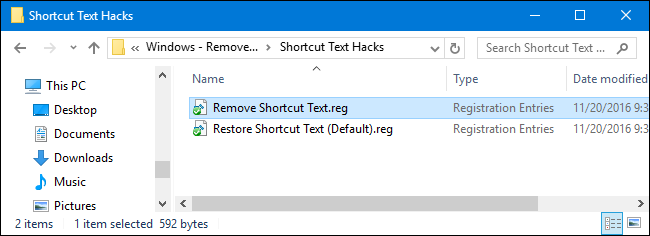Quick Links
When you make a new shortcut in Windows, it automatically adds "- Shortcut" to the end of the shortcut's file name. This doesn't seem like a big deal, but they can be bothersome. Sure, you can remove the text yourself when you create the shortcut, but why not stop it from happening in the first place?
After all, we already have a shortcut arrow overlaid onto the icons of shortcuts---unless you've removed the arrows. How much reminding do we really need that they are, in fact, shortcuts? Plus, if you keep a lot of shortcuts around, the extra length on their names can get cumbersome. If you're willing to make a quick change to the Windows Registry---or download our one-click hacks---you can prevent Windows from adding the text in the first place.
Remove the "- Shortcut" Text by Editing the Registry Manually
To remove the "- Shortcut" text for any PC running Windows Vista all the way through Windows 10, you just need to make an adjustment to one setting in the Windows Registry.
Standard warning: Registry Editor is a powerful tool and misusing it can render your system unstable or even inoperable. This is a pretty simple hack and as long as you stick to the instructions, you shouldn't have any problems. That said, if you've never worked with it before, consider reading about how to use the Registry Editor before you get started. And definitely back up the Registry (and your computer!) before making changes.
Open the Registry Editor by hitting Start and typing "regedit." Press Enter to open Registry Editor and give it permission to make changes to your PC.
In the Registry Editor, use the left sidebar to navigate to the following key:
HKEY_CURRENT_USER\SOFTWARE\Microsoft\Windows\CurrentVersion\Explorer
On the right-hand side, scroll down and locate a value named link. If you don't see the value, you'll need to create it by right-clicking the Explorer key, choosing New > Binary Value, and then naming the new value "link."
When you've found---or created---the link value, double-click it to open its properties window. In the "Value data" box, replace the current value with "00 00 00 00." Note that the current value you see will depend on what version and edition of Windows you're running. It doesn't matter what's there already. Just replace it with all zeroes.
You'll need to restart your computer (or sign out and back in) to complete the change. Test it out by creating a new shortcut. Windows should no longer add the "- Shortcut" text. If you want to reverse the changes, just head back into the Registry and delete the link value. This will work whether the value was already there or you created it yourself. Windows will recreate the value with the default setting when it needs to.
Download Our One-Click Registry Hacks
If you don't feel like diving into the Registry yourself, we've created some a couple of Registry hacks you can use. The "Remove Shortcut Text" hack sets the link value to 0, creating the value if it needs to. The "Restore Shortcut Text (Default)" hack deletes the value, restoring the default and causing Windows to add the "- Shortcut" text again. Both hacks are included in the following ZIP file. Double-click the one you want to use and click through the prompts. When you've applied the hack you want, restart your computer (or log off and back on).
These hacks are really just the Explorer key, stripped down to the link value we talked about in the previous section and then exported to a .REG file. And if you enjoy fiddling with the Registry, it's worth taking the time to learn how to make your own Registry hacks.

